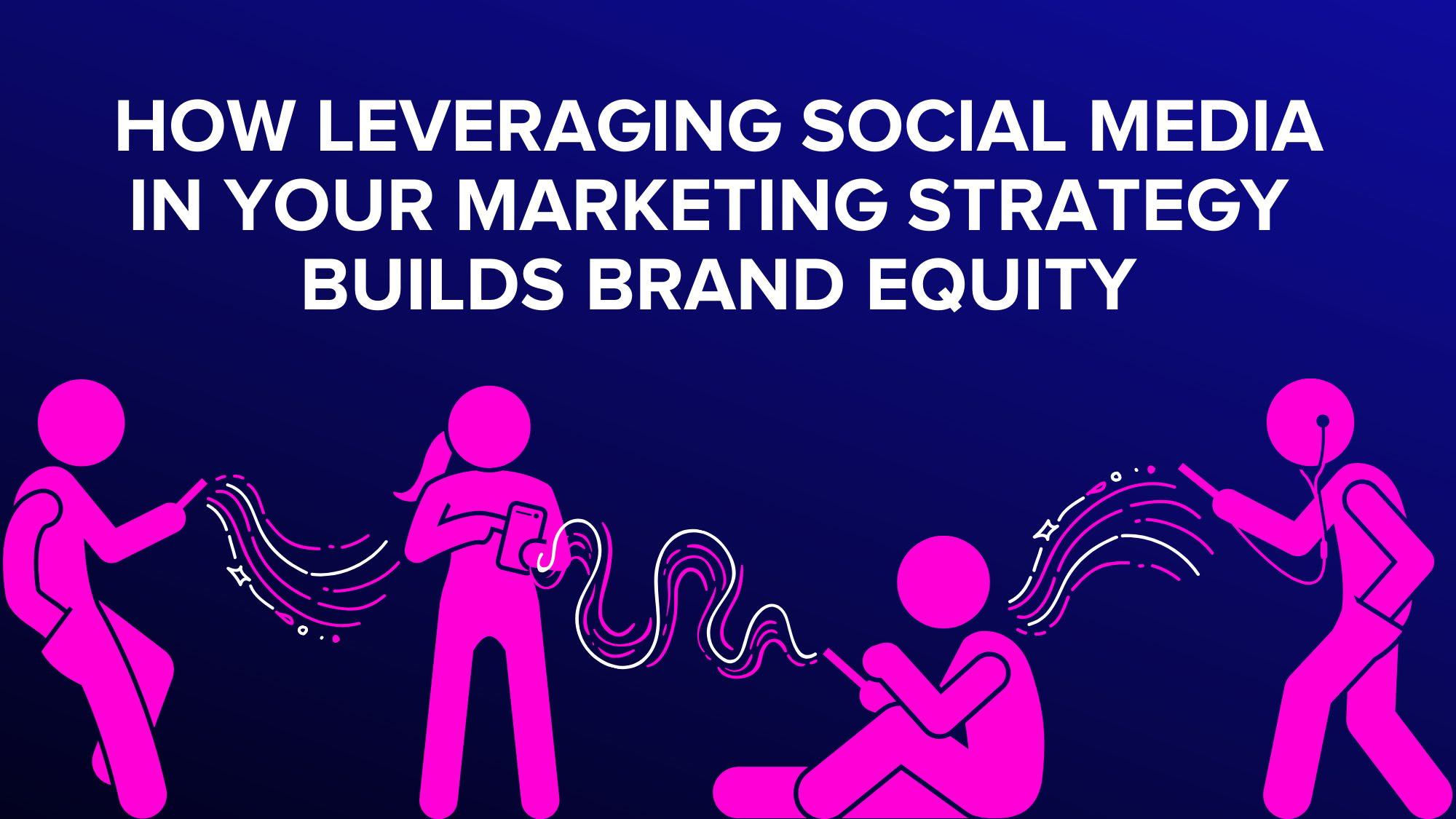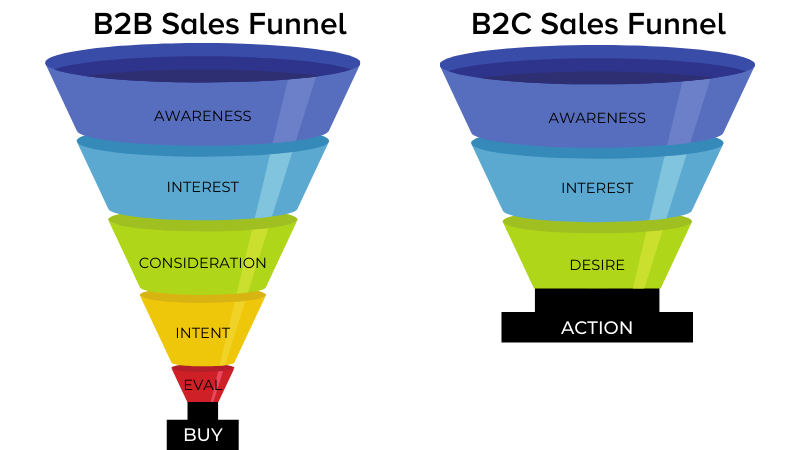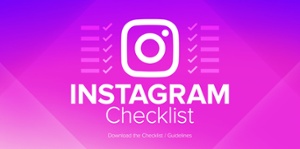
15 years ago, my job as a social media manager didn’t exist. Much of the world had already become familiar with navigating the internet; email, blogs, search engines, the beginnings of sharing media through an online network, and the early depth of potential in the power that lies within e-commerce.
But the ability to connect to a network of people around the globe on an easily-navigated website, share experiences and media instantly, and find relevant content through personal interests and behavior, is a notion that changed the world forever.
Marketers could have assumed that a new frontier was emerging as we watched it unfold, but nobody could have truly prepared the world for what digital marketing has become.
When the television was invented, it was famously monumental for advertising due to its proximity to the dinner table (we’ve all seen that episode of Mad Men, haven’t we?). Now, with phones in almost every pocket, we’ve gotten even more personal.
Consumers are engaging customer touchpoints at all hours, even if they aren’t actively aware of it, from their couches, beds, cars, during lunch breaks, and probably even commercial breaks.
The way people engage with brands has changed and digital marketing is booming. Even through the birth and evolution of social networking platforms such as Myspace, Facebook, Twitter, Instagram, Snapchat, and TikTok, utilizing social media for marketing was not used in quite the same ways as it is today until much more recently.
This is especially true in the current climate of the COVID-19 pandemic, where social media has become one of the only ways consumers or clients are interacting with businesses. Due to the tandem shifts of digital marketing and the ongoing pandemic, the need for companies to harness the full potential of social media in their marketing strategies is increasing.
We support enterprise clients with creative content here at VMG Studios, and over our 16 years in business, we’ve seen first-hand how social media has taken the forefront for our clients reaching their target audience.
However, the extensive benefits of leveraging social media in a strategy for brand building can far too often go unrecognized. Social media marketing and management are left as an afterthought, or a classic move most marketers and entrepreneurs are familiar with, pushed off to an intern.
In reality, social media marketing should be included in the core of your marketing strategy. A company’s presence on social media is a direct representation of its brand and should be considered a legitimate touchpoint to meet consumers wherever they may be in their buying journey.
This article will help outline how and why social media is beneficial to organically building brand equity, and hopefully inspire any entrepreneur to explore all of the possibilities social media has to offer for a business.
Utilizing Social Media in the Sales Funnel Process
Millions of people are scrolling social content at any moment with the potential of coming across your brand, and each of those individuals is scrolling with a different intention.
The good news is there are opportunities on social media for each stage of the B2B and B2C buying journeys and increasing sales through social media is more than possible.

The bad news is it’s not as instantaneous as we’d like it to be. And this is where the focus on brand equity comes into play.
If you’re new to a social network, for example, and simply post a product with a call-to-action to “head to the link in your bio to buy,” the chances someone will convert this way are slim. Consumers will wonder, “Is the seller a trusted source to buy from?” “Who am I supporting?” “Why should I buy from them and not Amazon?”
These are questions we all ask ourselves without realizing it, because most of the time, branding answers them for us.
In scenarios like that above, if a company’s brand has yet to be built and isn’t instantly recognizable, the aspiring entrepreneurs are often frustrated with their lack of business growth through social media.
This is why the awareness stage – which is part of the customer sales funnels as well as any branding strategy – is imperative.
Awareness
Regardless of whether your company is B2B or B2C, each sales funnel begins with awareness. How does your company build recognition? Through strong branding and marketing.
We’ve outlined 8 steps to building a brand:
- Identify your brand’s mission and values
- Identify your target audience
- Identify the differences between you and your competitors
- Identify your brand voice
- Create a visual identity: colors, fonts, logo
- Come up with a slogan or tagline
- Deploy brand consistently
- Build trust
Once you’ve established your brand, it’s time to market it through your website, products and services, and (yep, you guessed it) your social media channels.
Social media is a great way to reach outside of your current network and customers, and you can do so in a few ways.
- Promotion: Intangible & Tangible
Naturally, social media is a perfect avenue for company promotion, but it’s more than just selling your products and services. Establishing relationships with your ideal clients is more important than ever before. Consumers want to support brands that align with their personal mission and values.
Brands can communicate and showcase their mission, values, and culture on social media to increase awareness and, hopefully, build brand loyalty. And they can do this across multiple social media platforms and strategically engage their target audience wherever they may be.
- Viral Factor
“Going viral” is synonymous with social media, and there is an opportunity to tap into the Viral Factor from a marketing perspective. Ultimately, I like to think of the Viral Factor as digital referrals and word-of-mouth marketing on steroids.
While there are SEO and algorithm strategies to increase the chance of going viral, it is often left to chance and your message resonating with people so that they share it with others. However, if you are able to go viral, you’ll increase your awareness and extend your brand’s reach to new audiences often at a low cost (which is great for us marketers).
Each social platform offers its own unique opportunity for organically extending your reach and building brand awareness.
Through hashtags, Instagram’s Explore page, TikTok’s For You page, Facebook’s suggested pages and groups, Twitter’s topics and suggested tweets, content shared through direct messages…. The list goes on, and your platform choices will vary depending on your audience and goals, but there is one thing we can say for sure: the opportunity for building brand awareness is there and continuing to grow.
Interest & Consideration
In the interest stage of the B2B and B2C sales funnels, consumers conduct a deeper audit of your company and product/services. Just like your website, social media is a 24/7 billboard for your brand. For example, if you have a new product launching soon, you can create a campaign related to that product and deploy content across social media for weeks leading up to the launch to entice excitement.
Besides raising awareness of your products and services, find ways to showcase other values your company brings to the table and how this differentiates your brand. Does your brand have a partnership with a non-profit or charity? Highlight that relationship on social media. Does your company value feedback from your consumers? Ask your followers via polls and other features to weigh in on design considerations of your next product or vote on their favorite slogan. If consumers are tagging you in posts showing off your product or services, engage in their comment section or re-share those posts to the brand’s social media accounts to show that you value their business and their shoutouts/recommendations.
In the interest stage, many consumers are likely comparing your brand to your competitors, meaning it’s important to establish a relationship in this stage.
This is where relationship marketing really comes into play.
What is relationship marketing?
Relationship marketing focuses on building meaningful relationships with customers to ensure their long-term support of your businesses. Connect with people personally first, then focus on product promotion.
Social media rewards human behavior. When in doubt, be human. Authentic interactions are mutually beneficial. By strengthening your bond with consumers, you are investing in the long-term life of your brand. Loyal connections on social media increase the likelihood your content will be shared and gives you an opportunity to truly hear your audience and understand what resonates with them. Additionally, the algorithm loves it.
When platforms like Instagram, Facebook, or TikTok see what appears to be genuine relationships on its platform – people who constantly comment and like each other’s posts – it’s going to flag that relationship and positively increase your ranking on that person’s feed.
READ: How to Build an Organic Instagram Following For Your Business
Intent & Evaluation
At these stages in the B2B or B2C sales funnels, a consumer is close to making a purchasing decision, meaning it’s imperative to provide any final pieces of information that will convince a lead to convert.
This includes having targeted links in your brand’s social media profile bio (hello, Instagram!) to allow consumers to easily view a variety of content and access your website or contact information.
Another reason it’s important to offer avenues to additional pieces of content is that leads can see what other people are saying about your brand or your products in comments and through branded hashtags. While your brand can’t control what other people might say, your profiles can provide as much information to mitigate any questions or concerns (a la content marketing, which we’ll get into later).
Purchase
Being able to make a purchase directly on social media is on the rise. A survey found that close to one-fifth of US consumers have shopped online either by using the “buy” button on social media (18%) or by clicking a shoppable post or story on a social network (16%).
Practically every single platform has developed some kind of shoppable feature, some of which are even prioritizing that kind of content (*cough* Instagram *cough*). It’s even a trend we identified in our 2021 Social Media Trends article.
This means leveraging in-app shopping features or creating a branded omnichannel shopping experience is critical to make the conversion as seamless as possible for those on social media.
Post-Purchase Loyalty
Why Relationship Marketing is Essential in a Social Media Strategy
Besides using social media to attract new customers, it’s also used to retain customers and build brand loyalty.
Since the introduction of the loyalty phase or “loyalty loop” of the sales funnel, there has been a much greater emphasis on relationships. Statistics show that a consumer’s relationship with a brand is critical for customer retention, increasing returning customers, and an overall increase in brand equity; therefore, increasing your marketing return on investment.
It’s fascinating to watch how different brands approach social. From sharing user-generated content (UGC), to live interviews with brand ambassadors, to simply sharing product photos or portfolio work – the creative possibilities are endless, and what works for one company may not for another.
Understandably, your content will differ depending on your industry and niche, but there is a common trend that works across the board and it lives in the core of what social media was created to do: relationship building.
This is what I consider the bread and butter of social media.
While being interviewed by VMG’s content manager for an article about building an organic following on Instagram, I said that social media marketing and relationship marketing go hand-in-hand. That doesn’t necessarily mean we shouldn’t also be focused on sales conversions, but rather seeing social in a new light altogether; as a sales funnel process just like any other marketing strategy we consider.
Branding has evolved. Consumer behavior has changed. Relationships matter.
How Brand Equity is Built Using Social Media
So, how does all of this – social media, the sales funnel, and relationship building – relate back to brand equity? First, for ease of understanding, let’s clarify some definitions within the term brand.
A brand is something intangible that comes with a promise. It’s what your consumers or clients think of you on an emotional level and how they feel when they hear your name. Branding, which includes the colors, shapes, voice, and messaging that represent a brand, creates a brand identity, which then creates an image for consumers.
In today’s marketplace, a brand is owned by the people and extends way past a company’s product or service offering. Branded content is woven into social media feeds along with personal content, blending the lines of promotional and personal. We’re now interacting with brands as we interact with friends, therefore expecting brands to share our values.
Consumers are increasingly desiring and searching for relatable and relevant content, and there is an expectation of interaction and engagement with a brand.
Social media is also a “new” form of word-of-mouth marketing. Anyone has the ability to express their thoughts about specific brands – both good and bad. They might share a piece of your content with their followers, which plays into the Viral Factor. While the sharing of content is ultimately what most marketers like to see, disliked or controversial content can also spread like wildfire. So, while the opportunity for exposure is expansive, so are the potential consequences.
Word-of-mouth marketing may also include the use of influencers (which are often paid), brand ambassadors, and other partners to help your brand reach outside its network.
While consumers inherently know that brands are ultimately trying to sell to people on social media, they don’t want to feel as if they’re being sold to. They want to get to know the brand, almost as if the brand is a person (yep, relationship marketing), and want to find the value in following a specific brand on social media.
3 Ways to Utilize Social Media Other Than Explicitly Selling to Build Brand Equity
1. Education Through Content Marketing
Consumers are savvier than they’ve ever been before when it comes to researching products or services. A survey found that the average person consumes 11 pieces of content before making a purchasing decision, which signals the need for your brand to have relevant and educational resources at one’s disposal.
Enter content marketing.
Content marketing is a strategic inbound marketing approach focused on creating and distributing valuable, relevant, and educational content digitally to attract, retain, and qualify potential new leads.
Whether it’s articles, videos, infographics, eBooks, or downloadable worksheets, repurposing content marketing assets on social media is a great way to provide value while establishing industry authority and expertise.
WATCH: 7 Benefits of Content Marketing
2. Share User-Generated Content
People love to be seen and heard. Our content manager, Chelsea, used to work in local TV news and she says one of the easiest ways for her station to build viewership loyalty was by showing viewer-submitted content (snow days and pets were top contenders).
The same goes for brands and social media. People tag brands in their stories and posts because they want people behind the brands to see it, and more often than not, they want some kind of acknowledgment. That may be commenting or liking a post your brand is tagged in, or even better, sharing it to your own feed (this is especially popular to do using story features on social platforms).
It also plays into the power of testimonials and word-of-mouth marketing. If people on social media are singing your praises, sharing that with your network establishes trust and ultimately serves as a referral or positive review.
3. Address Any Challenges or Concerns
Where there is a problem, there is an opportunity. If there is any kind of negative press about your brand, you can use social media to strategically explain and address those challenges. Ultimately, your Public Relations team can leverage social media to speak directly to your target audience and help mitigate any fears they may have in supporting your company. It’s a good way to reinforce and promote brand values.
You can also use social media to talk directly to customers who may be having a problem. This is especially prevalent on Twitter. Many established brands use Twitter as a way to engage in real-time with customers who may be unhappy and use it as a customer service platform.
The Role Social Media Plays in Building Brand Equity
Social media is an avenue to not only sell but to connect with consumers, establish trust, and build long-lasting relationships.
The evolution of social media has given the opportunity for consumers to interact with a brand and be a “part of the brand” even without making any purchase. This has proved to be especially important during COVID-19 where social media has played a huge role in keeping companies connected and aligned with their target audience. While money might not be made with every single social media interaction or exchange, the connections your brand is making still have great value.
You might get direct insights and immediate feedback that can help your brand improve its products, services, or processes. You increase the likelihood of word-of-mouth referrals and can expand your reach past your initial network. You might even go viral.
Due to the rise in digital marketing, particularly social media marketing, consumers have more power than they’ve ever had before in the success of companies. Listen and invest in your consumers, build relationships, and your customers will invest in you.
Looking for ways to organically build your Instagram following? Click the image below to download our free Instagram checklist






